Friday☕️

Trending:
- Today, April 11, 2025, China announced an increase in tariffs on U.S. imports to 125%, intensifying trade tensions with the United States. This new tariff rate targets a range of American products, affecting sectors such as agriculture, technology, and manufacturing, though the announcement did not specify exact categories. The decision underscores China's response to ongoing economic pressures from US trade policies, marking another escalation in the trade dispute.
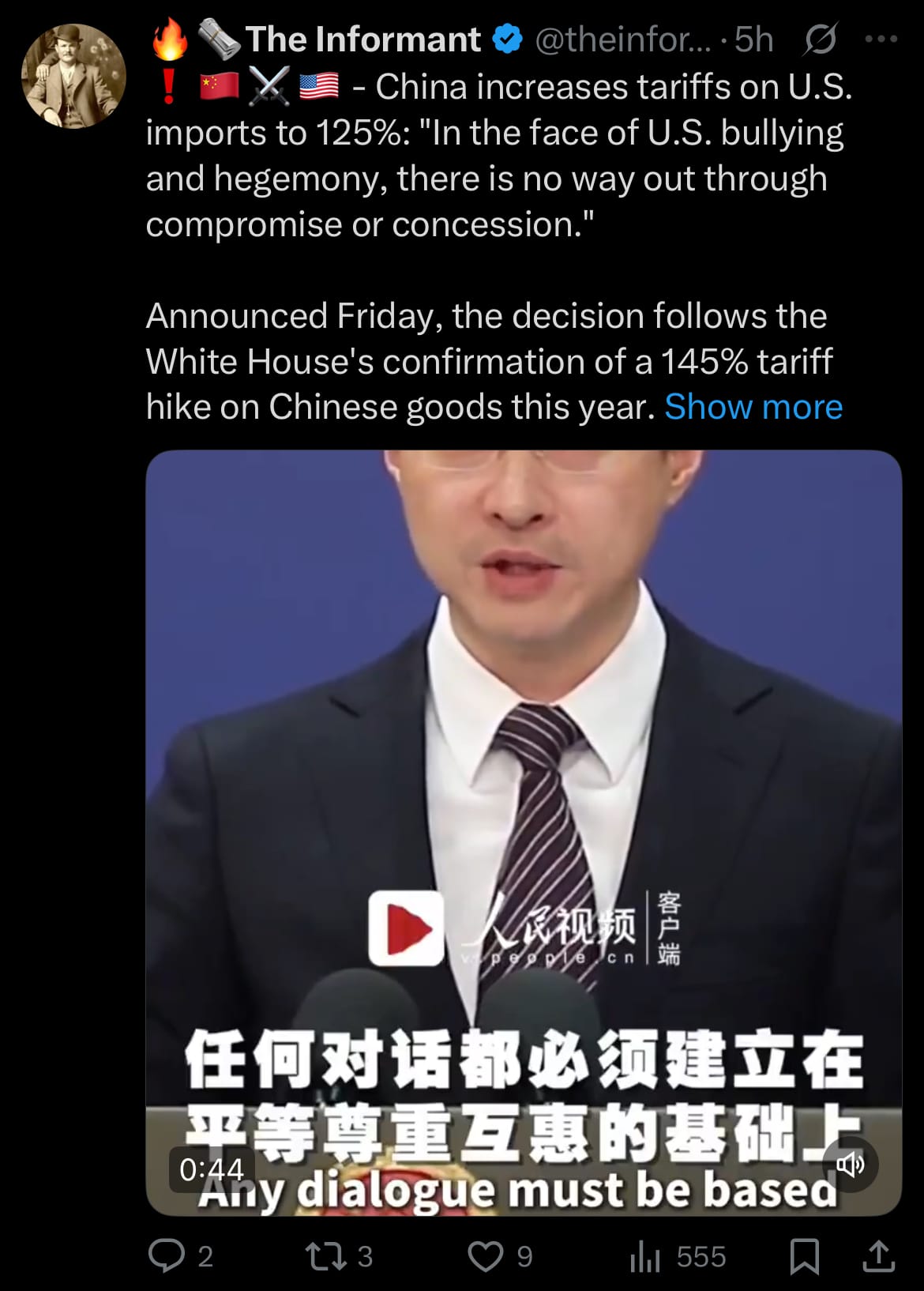
- The United States currently imposes tariffs on Chinese imports at a total rate of 145%, applied across various goods to influence bilateral trade dynamics. China's 125% tariff on U.S. imports sets a strong countermeasure, with both nations maintaining elevated duties that differ by product. The U.S. approach aims to pressure China to negotiate new trade policies or push China out of dominance in global trade markets, though outcomes remain uncertain.
Economics & Markets:
- Yesterday’s U.S. stock market:
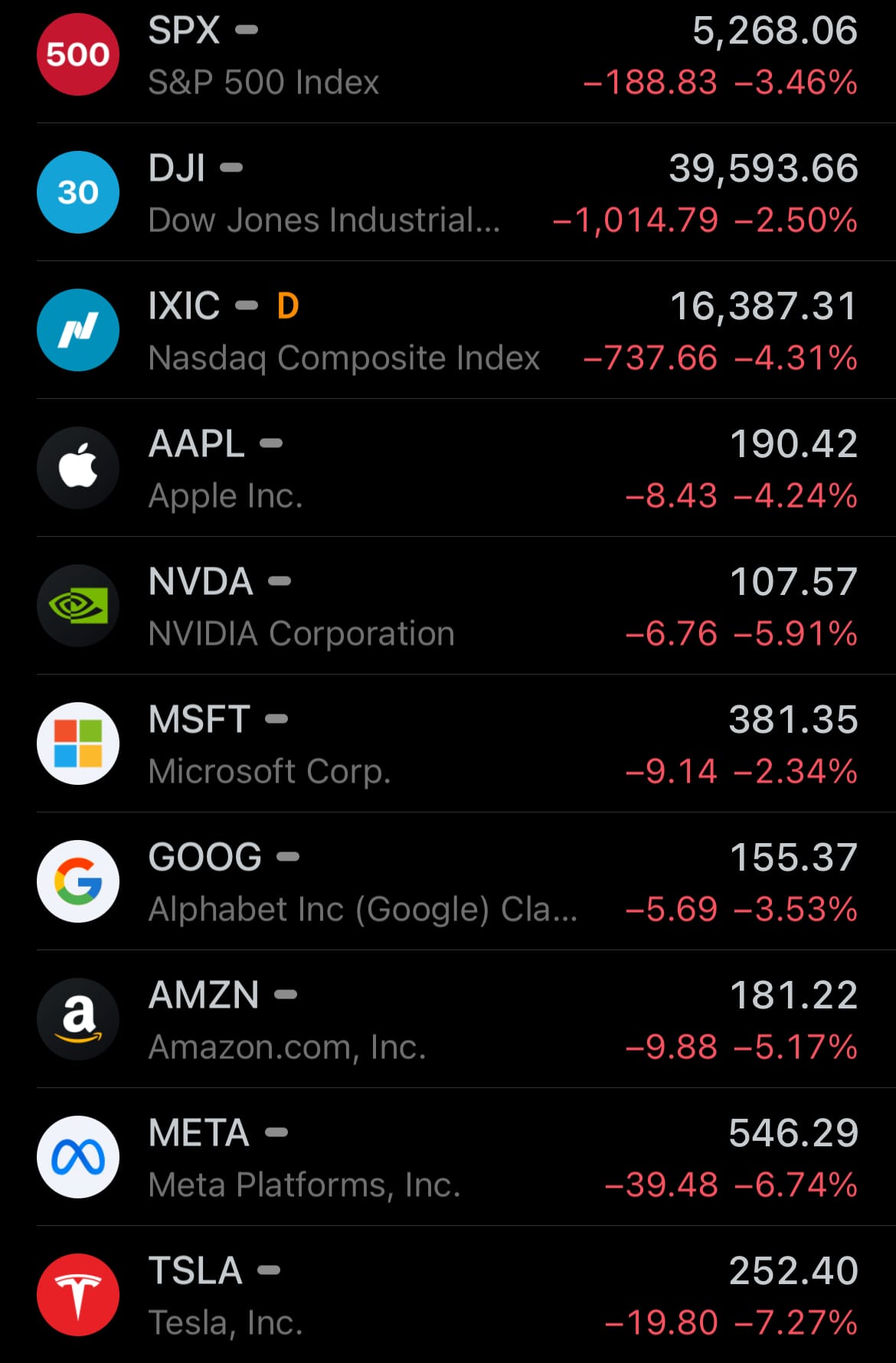
- Yesterday’s commodity market:
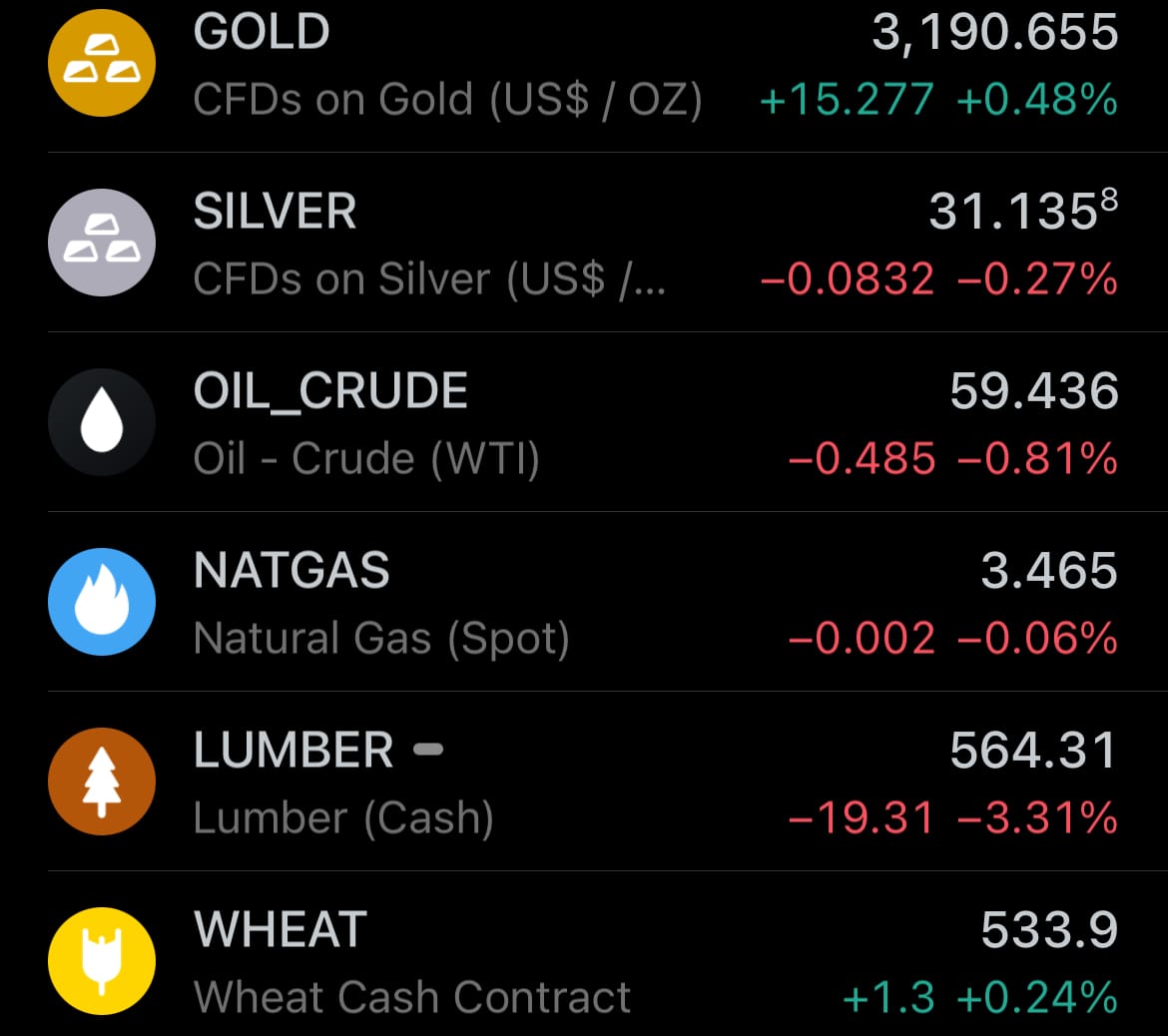
- Yesterday’s crypto market:
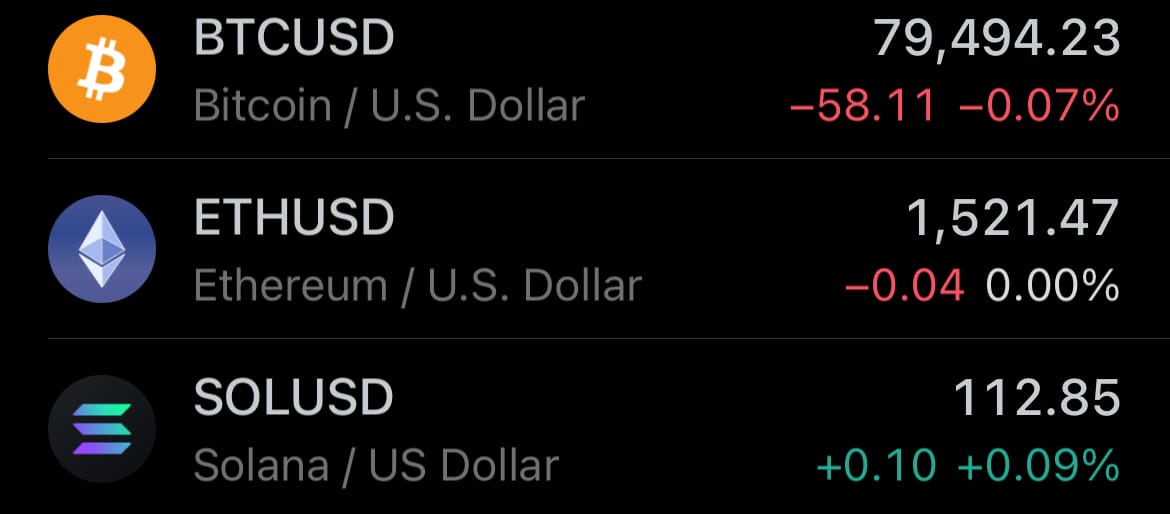
Environment & Weather:
- Today, April 11, 2025, northern China, including Hebei province, is experiencing severe winds ahead of a major storm, with gusts reaching 150 km/h (93 mph). Videos shared on social media from places like Zhangjiakou show debris being tossed and trees swaying heavily. Beijing has issued an orange gale warning, a rare alert prompted by a cold vortex moving in from Mongolia, which is also causing a significant drop in temperatures.
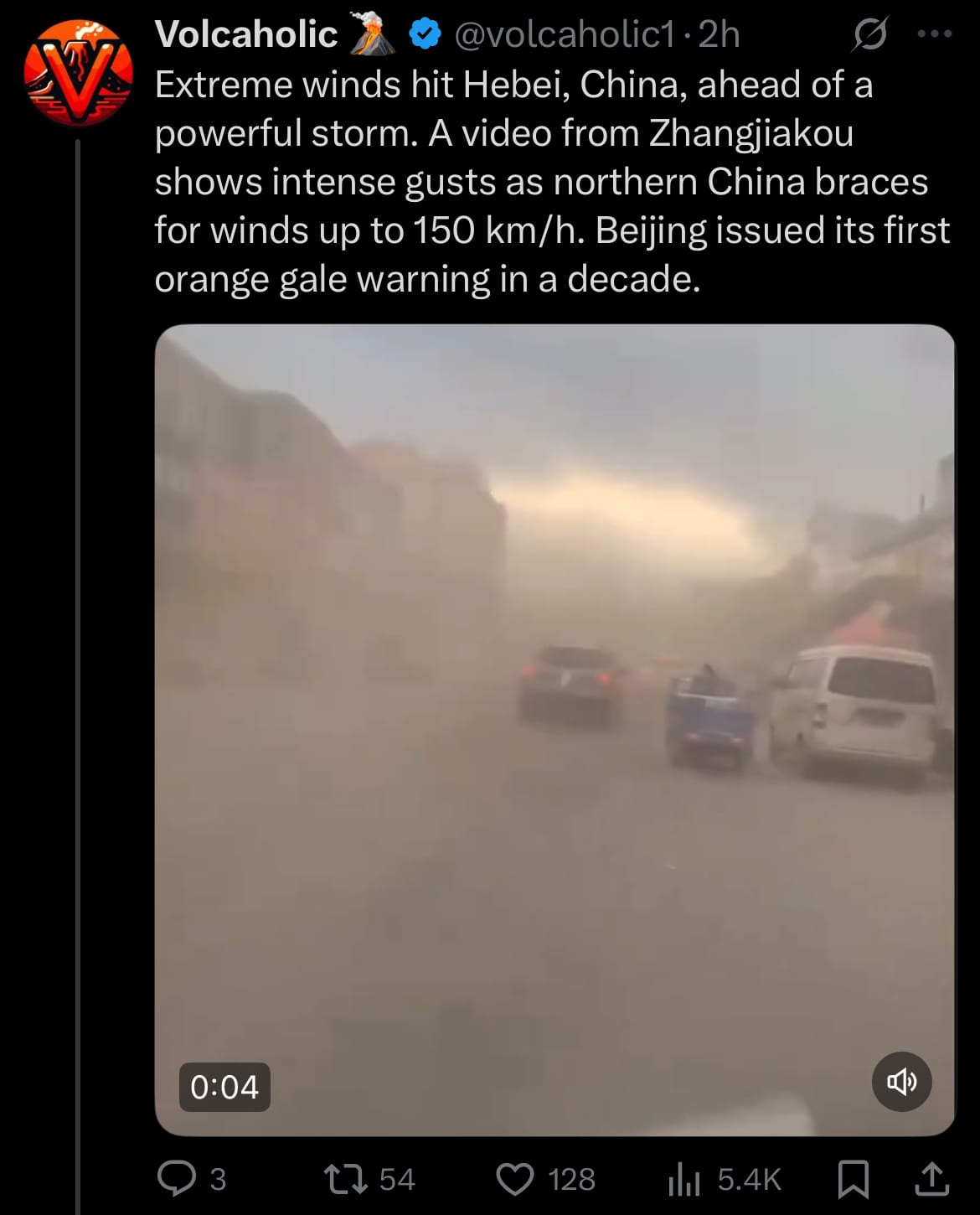
- Authorities have responded by closing parks, canceling outdoor events, and advising residents to stay indoors to avoid potential hazards from the strong winds, rated as level 11 to 13. The storm is expected to continue through Sunday, April 13, with the strongest winds forecast for Saturday.

Space:
- Yesterday, April 10, 2025, China launched the Tongxin Jishu Shiyan Weixing-17 (TJSW-17) mission from the Xichang Satellite Launch Center in Sichuan Province. The launch used a Long March 3B/E rocket, a reliable vehicle for China's space missions. The Xichang facility, set in a mountainous area, is a major hub for launching satellites, especially for communication and weather purposes. The rocket successfully placed the TJSW-17 satellite into a geostationary transfer orbit (GTO), continuing China's active 2025 launch schedule.
- The TJSW-17 satellite entered a geostationary transfer orbit, an elliptical path with its closest point to Earth at about 200-300 kilometers (124-186 miles) and its farthest point around 35,786 kilometers (22,236 miles), the altitude where satellites can maintain a fixed position above the equator. From this orbit, the satellite will adjust to a geostationary orbit, staying over one spot on Earth’s equator, moving in sync with the planet’s rotation. If you could track its initial path, it might look like a stretched loop from Earth’s perspective, but once geostationary, it will seem stationary in the sky. This marked China’s 19th launch of 2025.
Science & Technology:
- Yesterday, April 10, 2025, OpenAI announced an upgraded memory feature for ChatGPT that allows it to access a user’s complete conversation history to deliver responses informed by prior interactions. Unlike the previous system, which relied on manually saved details or limited recall, this update enables the AI to automatically reference all past chats—such as topics discussed, preferences, or questions asked—to provide more relevant answers. The feature is initially available to Plus and Pro subscribers, excluding regions like the EU, UK, Switzerland, Norway, Iceland, and Liechtenstein due to regulatory restrictions. OpenAI plans to extend access to Team and Enterprise users in the coming weeks, but no details were provided for free users.

- The system aims to create a more continuous dialogue by drawing on full chat histories, potentially aiding tasks like resuming projects or recalling user-specific details without repetition. Users can opt out, delete specific memories, or use a temporary chat mode to prevent data storage, offering control over what’s retained. The regional limitations and rollout indicate implementation challenges, and it’s uncertain how the feature performs across varied contexts or how it addresses past user feedback about response accuracy. OpenAI positions this as a step toward more context-aware AI.
Statistic:
- Largest public clothing companies by market capitalization:
- 🇫🇷 LVMH: $293.04B
- 🇫🇷 Hermès: $268.75B
- 🇪🇸 Inditex: $158.70B
- 🇺🇸 TJX Companies: $142.39B
- 🇯🇵 Fast Retailing: $98.81B
- 🇫🇷 Dior: $97.22B
- 🇺🇸 Nike: $87.55B
- 🇺🇸 Cintas: $82.36B
- 🇺🇸 Ross Stores: $45.67B
- 🇩🇪 Adidas: $39.36B
- 🇨🇦 lululemon athletica: $33.03B
- 🇫🇷 Kering: $22.28B
- 🇸🇪 H&M: $21.00B
- 🇬🇧 Next plc: $17.30B
- 🇮🇹 Moncler: $15.97B
- 🇮🇹 Prada: $15.78B
- 🇺🇸 Burlington Stores: $15.33B
- 🇺🇸 Tapestry: $13.92B
- 🇺🇸 Ralph Lauren: $12.86B
- 🇩🇪 Zalando: $9.06B
- 🇵🇱 LPP SA: $7.71B
- 🇺🇸 Gap Inc.: $7.64B
- 🇮🇹 Brunello Cucinelli: $7.20B
- 🇨🇦 Gildan: $6.18B
- 🇺🇸 Levi Strauss & Co.: $5.90B
Image of the day:

Thanks for reading!
Earth is complicated, we make it simple.
Click image to view the Earth Intelligence System:
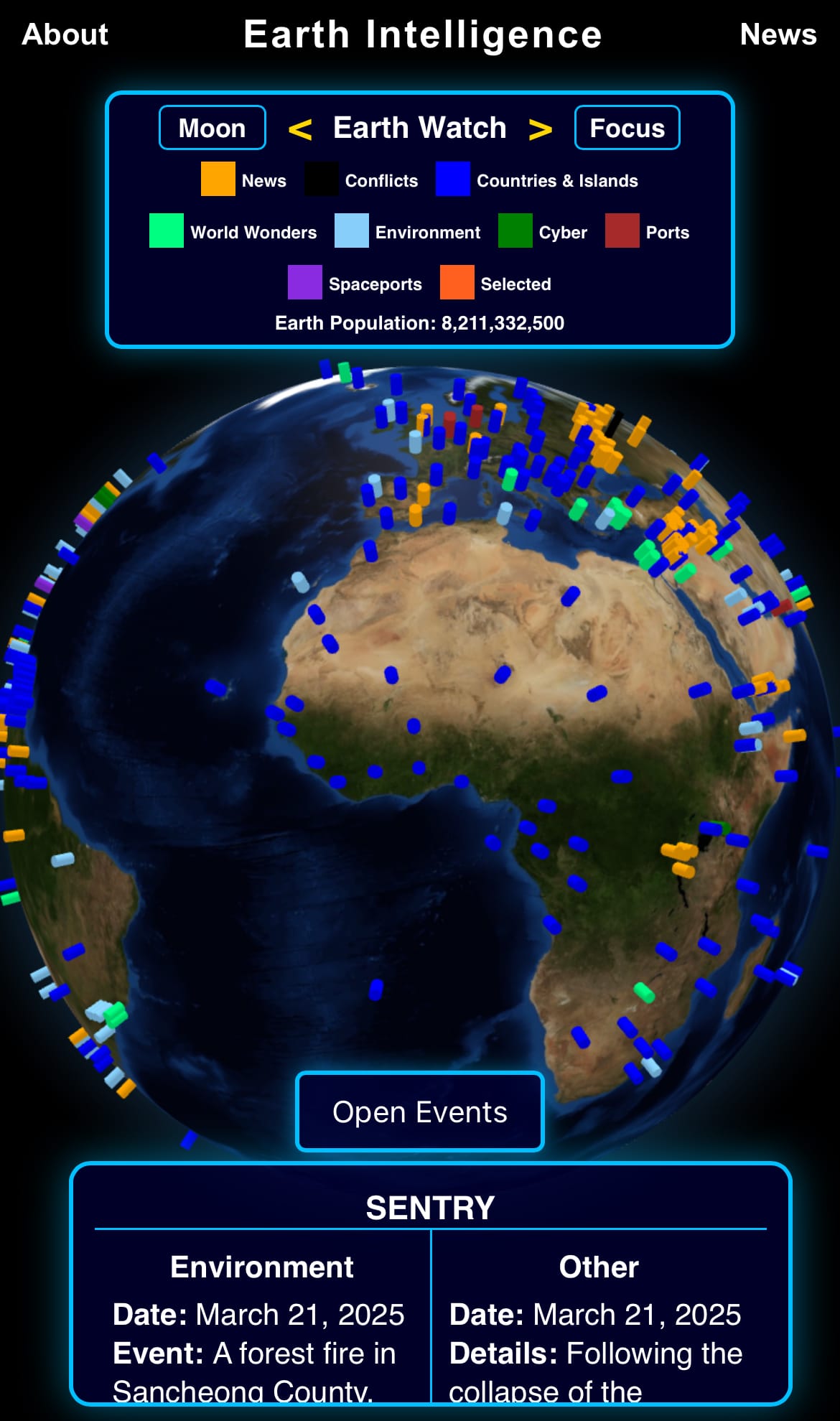


Support/Suggestions Email:
earthintelligence@earthintel.news




